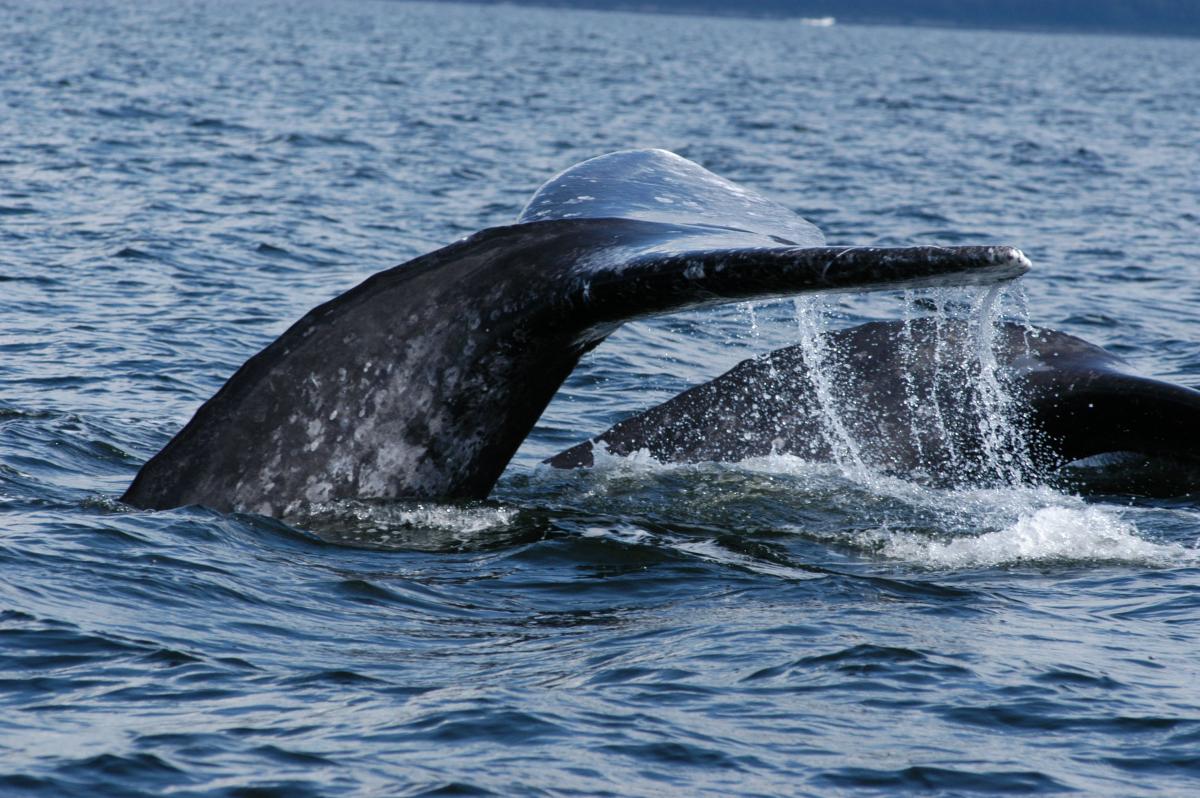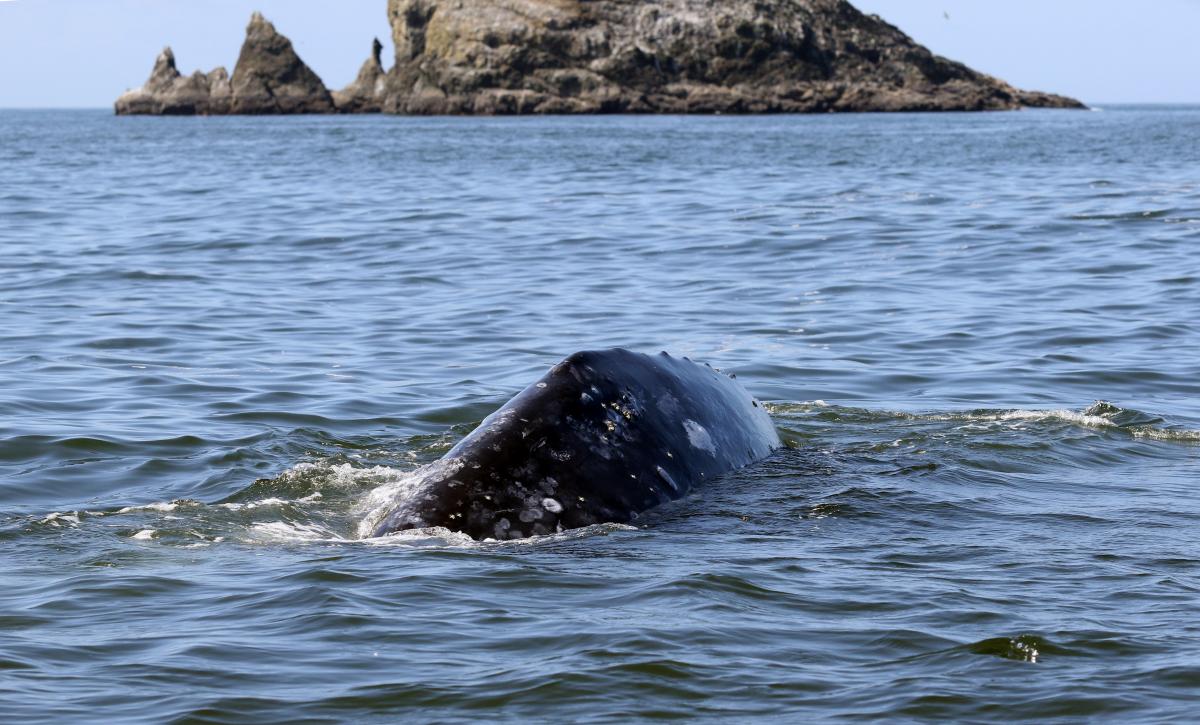
This is a long term study Cascadia began in the 1980s and since 1998 has coordinated a collaborative photo-ID effort along the US West Coast tracking identified gray whales. Over 2,000 different individuals are tracked by their natural markings as a part of this research and used to estimate abundance, trends, and movements of primarily the animals that summer and feed in the Pacific Northwest but also some of those that migrate through these waters on route to other feeding areas. Annual estimates of the PCFG subgroup based on mark recapture using photo-IDs has generally been between 200-250 for the last 15 years (see Calambokidis et al. 2019, which includes data through 2017). Other recent findings have documented a high rate of internal recruitment to the PCFG with 102 calves from 62 PCFG mothers documented through 2015 and these known calves now representing a significant portion of the PCFG (Calambokidis and Perez 2017a with link to pub). We have also documented that PCFG gray whales often migrate together both southbound to Mexican wintering areas but also on their return trip creating greater potential for interbreeding of PCFG whales (Calambokidis and Perez 2017b with link to pub). IWC publication link).
See also North Puget Sound Gray Whales
Information on gray whale strandings in Puget Sound please visit our Strandings page.
For a variety of publications and reports on gray whales please click here. Also visit our Publications page for a list of all Cascadia Research publications.
